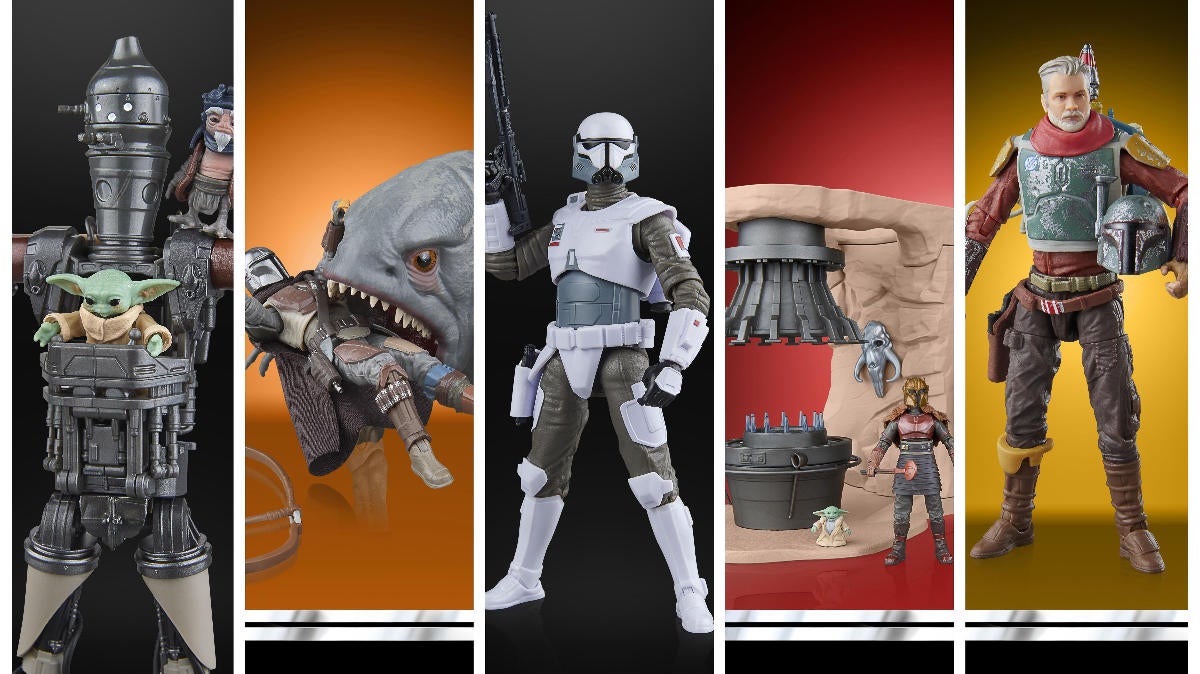The Droids Represent Everything That Makes Star Wars Great
Star Wars: The Rise of Skywalker finally flies into theaters this week, and it’s expected to [...]
Star Wars: The Rise of Skywalker finally flies into theaters this week, and it's expected to bring a conclusion to decades of storytelling in the galaxy far, far away. Regardless of whatever you've consumed in the Star Wars universe, you can safely expect a few constants — interesting characters, an epic space battle, and an appearance from some sort of droid. Droids fill a wide array of roles in the Star Wars world, ranging from loyal companions, like C-3PO and R2-D2, to ominous villains, like IG-88 and 4-LOM, to glorified window-dressing, like mouse and battle droids. Even as technology and robotics have evolved to play a larger role in our lives, there's something about the droids in Star Wars that remains oddly magical and incredibly watchable, a fact that can still be seen in the franchise today.
Although droids play such vastly different roles across the Star Wars universe, it can be argued that their practical application is incredibly — and almost hilariously — limited. A fair share of recurring Star Wars droids have either a single function or none at all (something Star Wars itself isn't afraid to poke fun at, as the official online classification for GNK droids refers to them as "little more than walking batteries"). "Multitool" droids like R2 and BB units, who seem to provide a sort of Swiss Army Knife of tools as the plot needs, have also been proven by robotics experts to not actually be feasible in real life. Humanoid-like droids still manage to be impractical in a whole other slew of ways, which can be seen firsthand with IG-88, a droid who is billed as an incredibly skilled assassin, but does little more in Star Wars: The Empire Strikes Back than turn his head from one side to another.
Even then, Star Wars creates a world where droids arguably don't need to be incredibly practical, because their real role in the franchise is so much more profound than that. Many of the most integral droids in the Star Wars universe operate as an audience proxy, reacting to the outlandish or terrifying developments that are happening around them. Through simple dialogue — or, often, just beeps and boops — the droids of Star Wars are able to convey an impressive array of emotions. There's a reason why GIFs of R2-D2 screaming and BB-8 giving a thumbs-up are so popular, and why legions of fans cried at C-3PO "taking one last look" at his friends in the final The Rise of Skywalker trailer — because those moments teach Star Wars fans that it's okay to feel those emotions. Even antagonistic droids are humanized and used for comedic relief, as the battle droids are better known for saying, "Roger, roger!" than they are for being terrifying soldiers.
There's also the nature of the character designs of many of the droids, which manage to be iconic while also incredibly simple. Regardless of how much technical ingenuity went into making a certain droid, many of their overall shapes and designs can be boiled down, whether it's the Astromech droids being consistently compared to trash cans, or BB-8 being unofficially dubbed "ball droid". This was especially the case when D-O debuted during Star Wars Celebration Chicago earlier this year, and immediately drew comparisons to everything from a stapler on a wheel to a cheerleading megaphone. The franchise even played on the iconic nature of some of those elements in Solo: A Star Wars Story, which introduced L3-37 (Phoebe Waller-Bridge), a "self-made" droid composed of scraps of other models. In a way, this simplification feels rooted in the sort of DIY nature of the original trilogy, as the crew famously bought up airplane scrap to repurpose for various props and characters. IG-88's head was literally made from part of a Rolls Royce Derwent jet engine, (which is also why the conical head shape can be seen in Mos Eisley Cantina and scattered throughout Star Wars: A New Hope). The franchise's overall approach to droid design arguably has birthed decades of fan-made recreations as well, some of whom craft life-size or fully-functioning droids off of nothing more than concept art or a few seconds of film.
The droids of the Star Wars universe bring to mind a lot of dichotomies — their roles are both irreplaceable and nonsensical, their emotions are both silly and poignant, and their construction is both extravagant and understated. Any other franchise — especially one that is decades into its run — would have begun to escalate its representation of droids, as similar technology becomes more common in our day-to-day lives. The fact that Star Wars' droids have existed so comfortably among all of those extremes is admirable enough, but it arguably says something about the larger franchise itself.
The world of Star Wars is meant to be enjoyed by viewers of all ages, and it's hard to deny that seeing an R2 or BB unit rolling across the screen captures that magic in a specific way. Even with franchises like Terminator and Westworld taking a dark approach to the dynamic between machines and humans, Star Wars has consistently subverted it, making its droid characters lovable, emotional, and a delight to watch onscreen.
Star Wars: The Rise of Skywalker lands in theaters on December 20th.

Welcome to Star Wars Week! ComicBook.com is celebrating the release of Star Wars: The Rise of Skywalker all week long with an in-depth look at the last four decades spent in the galaxy. Click on the banner to see more of our exclusive coverage and videos celebrating all things Star Wars!




